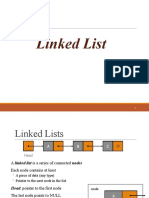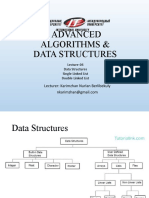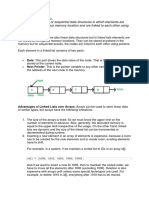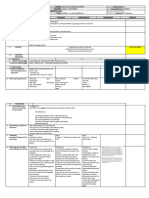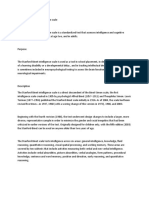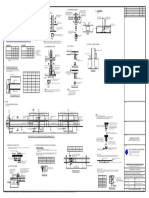0% found this document useful (0 votes)
18 views6 pagesLinked List Tutorial
A linked list is a dynamic data structure consisting of nodes connected by pointers, allowing for flexible size and efficient insertions and deletions. There are three main types of linked lists: singly, doubly, and circular, each with distinct characteristics. While linked lists offer advantages like dynamic memory allocation and ease of implementing other data structures, they also have drawbacks such as increased memory usage and slower access times.
Uploaded by
Taosiful AkashCopyright
© © All Rights Reserved
We take content rights seriously. If you suspect this is your content, claim it here.
Available Formats
Download as PDF, TXT or read online on Scribd
0% found this document useful (0 votes)
18 views6 pagesLinked List Tutorial
A linked list is a dynamic data structure consisting of nodes connected by pointers, allowing for flexible size and efficient insertions and deletions. There are three main types of linked lists: singly, doubly, and circular, each with distinct characteristics. While linked lists offer advantages like dynamic memory allocation and ease of implementing other data structures, they also have drawbacks such as increased memory usage and slower access times.
Uploaded by
Taosiful AkashCopyright
© © All Rights Reserved
We take content rights seriously. If you suspect this is your content, claim it here.
Available Formats
Download as PDF, TXT or read online on Scribd
/ 6


